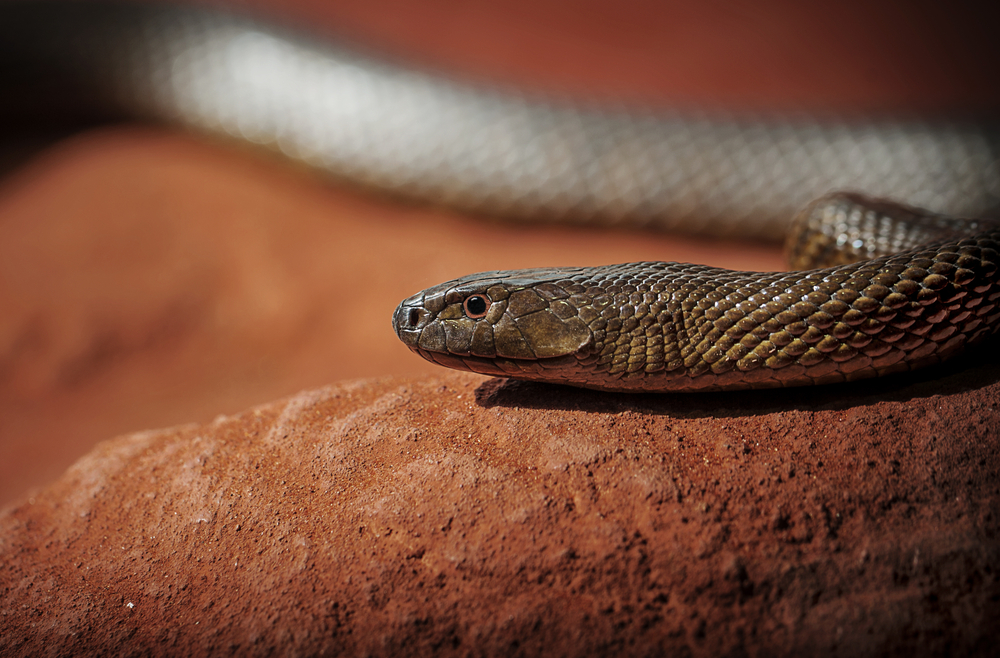Pet Snake Nearly Kills Teen: Why the Inland Taipan Is So Deadly

An Australian teenager was left fighting for his life after being bitten by his pet inland taipan, one of the most dangerous snake species in the world, according to news reports.
The teen was attempting to put the pet snake back into its enclosure, when it lashed out and bit him, Fox News reported Nov. 7. He was rushed to the hospital and remained in serious condition as of Nov. 7.
But what makes the inland taipan (Oxyuranus microlepidotus) so dangerous? [The World's 6 Deadliest Snakes]
"The taipan is a mammal specialist. It feeds almost exclusively on mammals, which is quite uncommon," said David Penning, a biologist and snake expert at the Missouri Southern State University.
As a result of this "specialism," the taipan's venom has evolved to be extremely lethal for all mammals, including humans, Penning told Live Science.
One reason the snake's venom is extremely potent is that it combines two types of toxic components that start affecting the human body very soon after entering the person's system.
"Its poison has a conglomerate of different types of venom properties, including neurotoxins and hemotoxins, which attack the body on multiple levels," Penning said.
Sign up for the Live Science daily newsletter now
Get the world’s most fascinating discoveries delivered straight to your inbox.
Neurotoxins affect a person's ability to control his or her body, Penning said. Within an hour of being bitten, a person will start experiencing symptoms such as slurred speech, seizures, difficulty breathing or an inability to control his or her limbs. And hemotoxins will affect the blood's ability to clot, leading to internal bleeding and organ damage, he said.
"If someone gets bitten by this type of snake, they need to get to the hospital as fast as possible," Penning said. "The actual time depends on how much venom has been delivered and also on the individual person, but the first hour is really critical. After that, people will experience further complications, such as hemorrhaging or ventilation shutdown," meaning they stop breathing.
Shy but deadly
Though these snakes have a deadly bite, there is no reason to demonize these creatures, which are native to eastern Australia, Penning said. The inland taipan is naturally rather shy and, if given a chance, would do anything to avoid a human, he said.
"I worked in a venom lab for four years, and I can tell you that every venomous snake I have ever met wants to be left alone," Penning said. "Besides, the venom is really expensive for them. It's a really expensive thing to create, and they are trying to use it conservatively. I see a venomous bite from a snake as a sort of last resort."
Penning added that it's extremely rare and unlikely, if not impossible, for someone to be bitten by a snake such as the inland taipan accidentally — for example, if a person were to stumble upon the animal in nature.
"In my experience, a huge majority of situations that I see is an individual seeking to handle the animal, and in doing so, they can get bitten," Penning said. "But I have yet to read a news story about someone being bitten by a snake they didn't know was there."
The road to recovery
Anti-venom exists to treat poisoning from this snake's bite, but according to Penning, the antidote must be administered very quickly. Even then, the patient would require extensive medical support to recover from such an incident.
"The anti-venom neutralizes the toxins and prevents further damage," Penning said. "However, it does not neutralize the damage that has already taken place."
It might take weeks for the teenage snake wrangler to recover, Penning said. He recommended that, rather than snakes, people choose more social creatures to keep as pets.
Originally published on Live Science.










